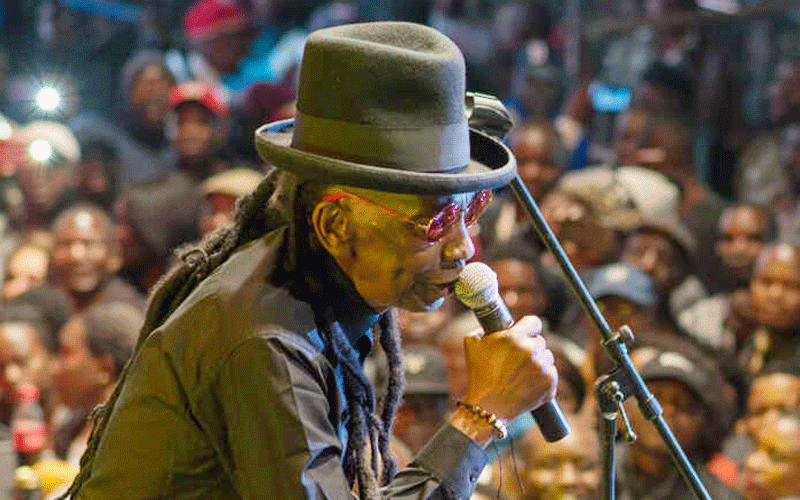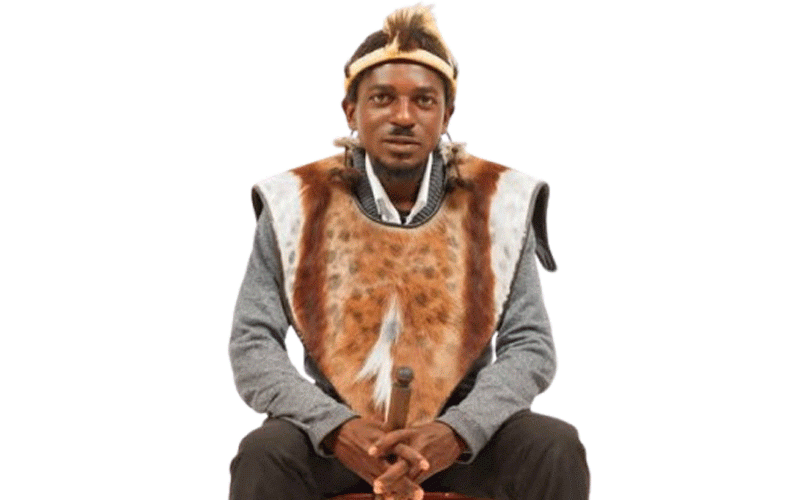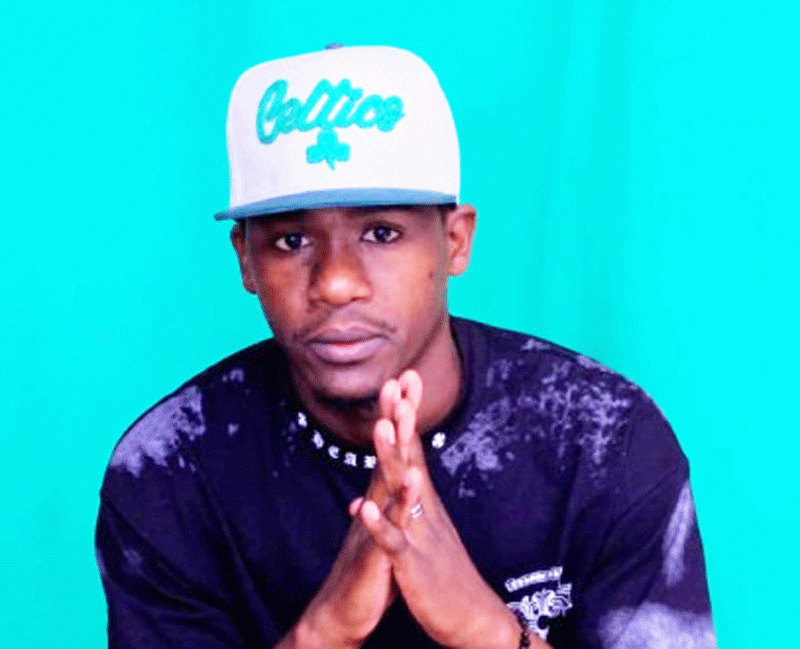
In the groove with Fred Zindi
It only dawned on me when Richard Brewer of BBC asked me: “We know that in Zaire they call their music rhumba, reggae is Jamaican, what name do you give to your music in Zimbabwe?”
I was tempted to say, “Zimdancehall” because it has a “Zim” in it, but I did not. All I simply said was that it was a difficult question to answer as we have had many varieties of music genres and influences including rhumba itself.
“If it’s difficult for you to answer that question and you have been dealing with Zimbabwean music for years, then who can?” he remarked.
A lot of controversy has been going on in the last four decades regarding what Zimbabwean music should be called. One of the great beauties about Zimbabwean music is its variety. Traces of all different forms of music that Zimbabweans have been exposed to in the past are found in many of the compositions from today’s Zimbabwean pop musicians.
For instance, there are traces of Western pop and rock in the music of groups such as Ilanga and Talking Drum, while Solomon Skuza, The Pied Pipers and Ebony Sheik fused most of their compositions with reggae music. John Chibadura, Nyami Nyami Sounds, Marxist Brothers, Devera Ngwena, Leonard Dembo, Naison Chimbetu and many others fused their music with the Zairean rhumba beat. Their version of rhumba is sometimes referred to as sungura. There are also some groups who fuse their music with South African mbaqanga. The likes of Lovemore Majaivana, Fanyana Dube, Jungle Band and Oliver Mtukudzi fall into this category. The Bhundu Boys, James Chimombe and lately Baba Harare came up with a version called jiti. But what do we call the contemporary music coming from, for instance, Jah Prayzah? If one listens to his Watora Mari, Dzamutsana and My Lilly, one can tell that the three songs come from completely different genres. This is all confusing.
Due to our colonial past, during Rhodesian times in the 1970s, when through radio, Zimbabweans were subjected to rock music, local musicians copied Western music genres such as Blues, Heavy Metal, Underground Rock, Jazz, Punk Rock, Soul, R‘n’B, Skiffle and Country and Western music. This was also the period when local musicians such as Manu Kambani, Stardust, Groovy Union, Soul and Blues Union, Eye of Liberty, Ebony Sheik, Wells Fargo, Echoes, The Sounds Effect, The Four Sounds, Electric Mud, and the Witstones emulated Western musicians and groups such as Jimi Hendrix, The Who, Pink Floyd, Deep Purple, Grand Funk Railroad, Uriah Heep, Led Zeppelin, Chuck Berry, Little Richard, James Brown, Chubby Checker and Bob Dylan. In the late 1960s and early 1970s almost every other Zimbabwean musician learned to play the guitar using Hendrix’s Hey Joe or All Along The Watchtower.
Although most of these genres have died down, Zimbabweans are still subjected to some of their influences, but are more exposed to other African rhythms such as music from Nigeria, DRC, Jamaica or South Africa. When they fuse these genres together some form of Zimbabwean music comes out. But what to call it is the question here. The days of tsava tsava are gone and apart from the association with traditional mbira music, most of the music coming out of Zimbabwe today has foreign elements.
- Chamisa under fire over US$120K donation
- Mavhunga puts DeMbare into Chibuku quarterfinals
- Pension funds bet on Cabora Bassa oilfields
- Councils defy govt fire tender directive
Keep Reading
Music comes in many different types and styles ranging from traditional rock music to world pop, easy listening and bluegrass. Many genres have a rich history or geographical significance, a cult following or music roots that go far beyond the 20th century.
Rock music from the United States of America and pop music from Britain such as that from the Beatles and the Rolling Stones in the 1970s Rhodesia was heard over the radios on a daily basis as the disc jockeys felt that playing Western music would make their listeners view them as more trendy and fashionable compared to those who played local music.
Because of the “popularity” of such music promoted through the radio by Black DJs who included Patrick Bajila, Wellington Mbofana and Webster Shamu, local musicians began to imitate it and any group which did not play copyright music from such big groups was looked down upon.
Today there is no single name to music coming from Zimbabwe because of the fusion with foreign music styles. The Zairean bands and South African bands continue to come, some even to stay. In 1977 The Real Sounds of Africa came from Zaire via Zambia to stay for good, while in 1986 Orchestra Mangelepa did the same.
The Harare Mambos Band which started in the 1960s and continued into the 1990s is a typical band which showed the diversity of music in Zimbabwe. They played rock, kwela, rhumba, traditional, reggae, soul, sungura, mbaqanga and jiti in one evening’s programme.
So what name shall we give to Zimbabwe’s modern pop music? Some prefer to call it chimurenga, or jiti, others call it sungura or museve. The Chimbetus call their kind of music dendera while Mtukudzi called his Katekwe or simply Tuku Music. Mokoomba calls its brand Afro-jazz and so on. A lot of names have been thrown into the ring.
To add to this, some groups fuse traditional folk music with modern pop to give a completely new sound which is now being identified as exclusively Zimbabwean music.
Surprisingly, the ghetto youths have come up with their own formula for music which has been fused with Jamaican dancehall rhythms. This, they call Zimdancehall, but it is only one genre of music among many. It has also given other genres, such as sungura, stiff competition.
Then there is Zim hip-hop, a Zimbabwean music genre with roots in the hip-hop music of North America. The genre is known for its association with the affluent youth in Zimbabwe. Artistes in this category include Cal_Vin, Awa, Charlie Zimbo, Stunner, King 98, Takura, Krimz Beats, Junior Brown, Fun F, Mudiwa Hood and 8L
It is, therefore, almost impossible to give one brand name to Zimbabwean music because it does not come in one form. After all, what is in a name?
The best method of identifying each form of music is through the artiste behind that type of music. When one casts his or her eyes to artistes such as Thomas Mapfumo, Robson Banda and the Four Brothers, then he or she knows that traditional mbira music (now commonly known as Chimurenga) will come from that angle.
The Bhundu Boys, James Chimombe and Mbombera on the other hand play jiti. Mtukudzi decided to call his music Tuku Music. Alick Macheso, Pengaudzoke, John Chibadura, Leonard Dembo, Tongai Moyo, Cephas Mashakada and a host of other artistes play what is commonly known as museve or sungura, which is a mixture of local and Zairean beats. Killer T and Soul Jah Love are identified with Zimdancehall while Stunner is regarded as a hip-hop artiste.
Any name given to the present day, Zimbabwean music is subject to debate. It was during the euphoria of independence in 1980 which saw the shaping of sungura bands such as Kassongo Band, Sungura Boys, New Black Montana, Pengaudzoke and Simon Chimbetu.
This sungura sound could be described as uniquely Zimbabwean, but no single name will suffice as it fuses rhumba with traditional mbira beat.
Most of Zimbabwe’s music expresses the social life and hardships experienced by the people. It talks about the war, the social conditions of ordinary people, poverty and the injustices in society. At times it talks about romance.
When Nigeria’s Fela Kuti became an international star, everyone of his followers knew that they were going to listen to a genre of music called Juju.
The signing of the Bhundu Boys with WEA Records culminated in a support opening act for Madonna at Wembley Stadium, London, in 1987 and the signing of Mapfumo to Island Records two years later surprised many Zimbabweans. This was the first time Zimbabwean groups were paid advance royalties and provided with the finest recording facilities previously afforded only to British and American rock/pop bands.
This provision helped to launch the two Zimbabwean acts to international fame and thus Zimbabwean music became an internationally exportable product. Although both acts were from Zimbabwe, there was no common name to their music genre as the Bhundu Boys called their genre jiti while Mapfumo called his Chimurenga.
The inaugural National Arts Merit Awards (Nama) was launched in February, 2002. It was through this platform that for the first time in the history of Zimbabwe, local artistes were given the recognition that they deserved for outstanding achievements in their field. But even today Nama has several musicians whose performances represent different music genres. At the 16th edition of Nama in 2017, Winky D, Ammara Brown, Fungisai Zvakavapano- Mashavave and Tammy Moyo all represented different genres ranging from Dancehall, Pop, Gospel to R’n’B. How I wish they were all classified under one Zimbabwean music genre.
Feedback: [email protected]











